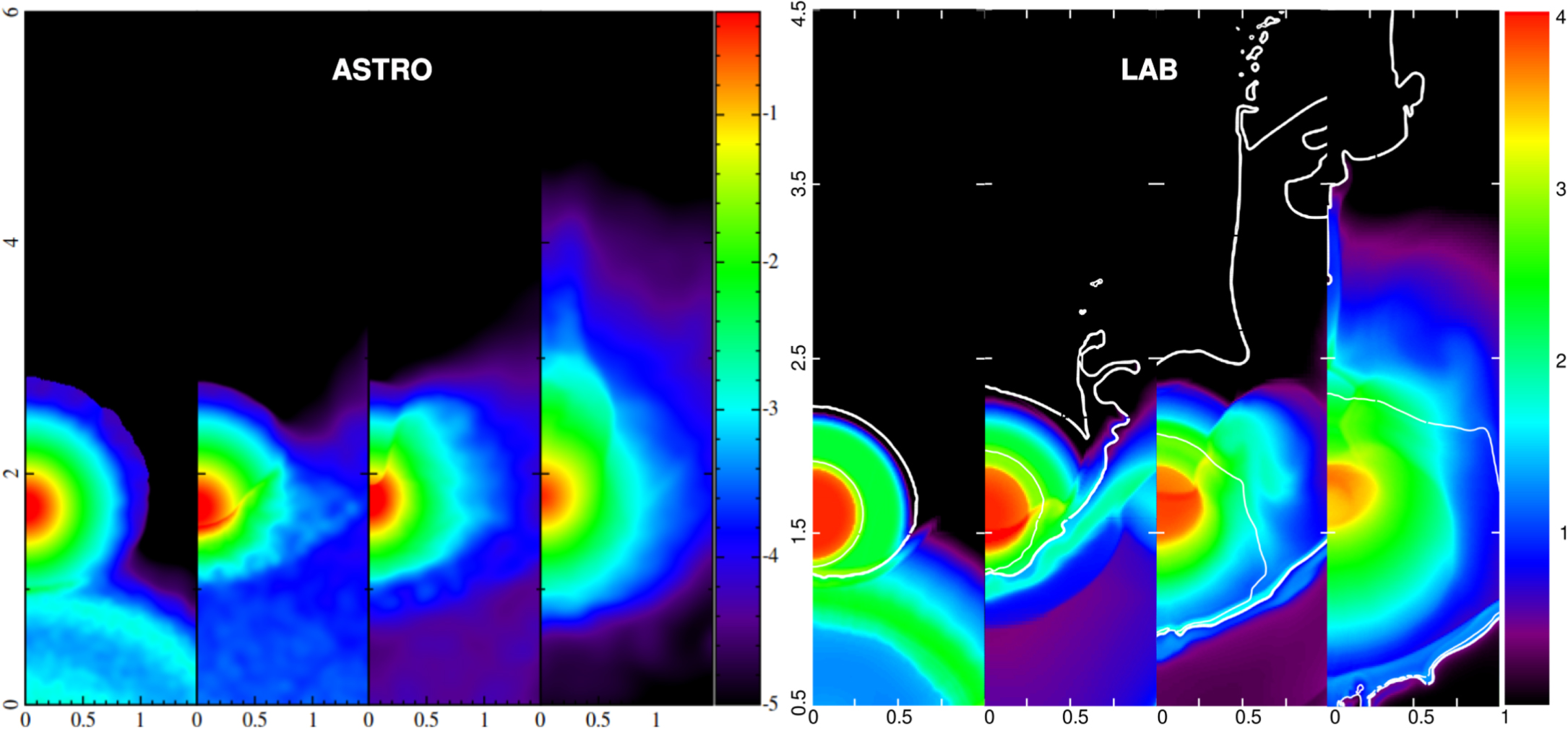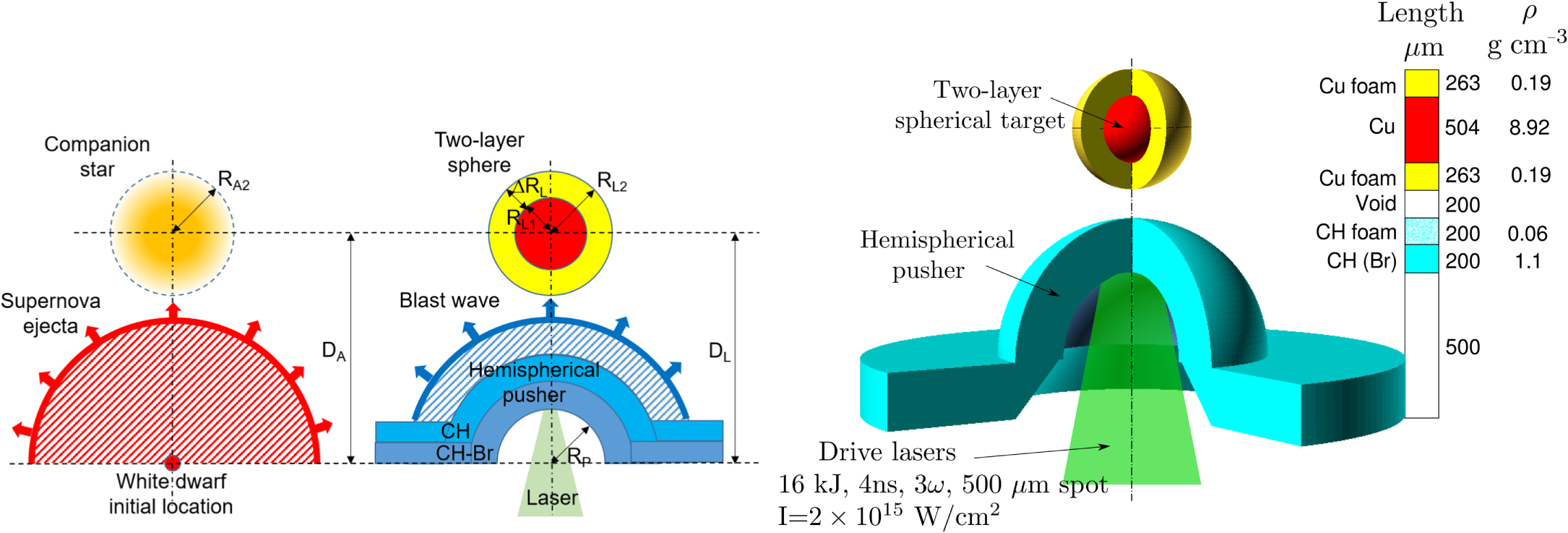The group of High Energy Density Physics within the Instituto de Fusión Nuclear Guillermo Velarde accumulated a extensive expertise in the development and application of radiative hydrodynamic simulation codes during last 25 years. Recently, the HEDP group collaborated in the proposal of a Laboratory Astrophysics experiment in the National Ignition Facility.
The aim of the proposed experiment is to study the interaction of a supernovae and its companion star in a binary system (a system formed by two stars). There exists some controversy in the scientific community about whether these types of objects can be observed. This proposed experiment can give us insight about the “shadow” left by the companion star and identify the traces that this astrophysical phenomenon can leave.
 |
Mass density (log scale) for the laboratory simulation with ARWEN (right, “LAB”) and a 2D slice of the 3D astrophysical simulation with SPHYNX (left, “ASTRO”). White lines in the laboratory simulations with ARWEN represent the boundary between materials. Units are solar radius in ASTRO and millimeters in LAB. (García-Senz et al, The Astrophysical Journal, Volume 871, Number 2) |
| This astrophysical object can be scaled down to laboratory dimensions and with a careful design of the experimental target, we can obtain in laboratory the equivalent phenomena as in the astrophysical scale. This scaling laws gave us the tools to inspect the astrophysical phenomena in laboratory, creating a new branch of astrophysics called Laboratory Astrophysics. | 
Proposed experimental setup. Left: schematic comparison between the astrophysical case and the laboratory platform. In the laboratory, a high-power laser is focused on the inner surface of a hemispherical pusher, which drives a plasma flow onto a two-layer spherical target. Right: 3D cutaway view of the experimental setup, showing the different materials, lengths, and densities. (García-Senz et al, The Astrophysical Journal, Volume 871, Number 2) |
